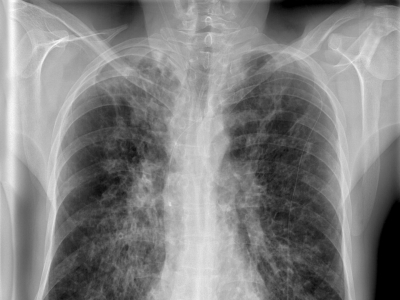A new method of testing the most common cause of life-threatening infection in people with cystic fibrosis could improve efforts to study and combat the illness.
The bacterium Pseudomonas aeruginosa is a leading contributor to hospitalizations, serious illness and early death for people with cystic fibrosis (CF). Scientists at The University of Texas at Austin have found a way to recreate conditions specific to the environment in which the bacterium spreads in the lungs of a person with CF, allowing them to identify several genes that appear to be necessary for its survival.
A description of the method and findings appear online today in the journal Proceedings of the National Academy of Sciences.

In cystic fibrosis, a serious genetic disease that causes recurring lung infections, bacteria colonize a patient's lungs, usually beginning in childhood, leading to difficulty breathing. One of the most dangerous of these bacteria is P. aeruginosa, which, within the unique mucus that forms in the lungs of a person with cystic fibrosis, develops into large, antibiotic-resistant colonies.
Although scientists first mapped the genetic structure of P. aeruginosa 15 years ago, efforts to pinpoint how it behaves during an infection and which genes would need to be turned off to stop its spread have been hampered in part by the difficulty of mimicking the unique conditions of a cystic fibrosis patient's lungs. Experiments that model the bacteria in animal cells, for example, have shown that P. aeruginosa behaves and grows in certain ways only when it is in the infected lungs of a person with CF.
Marvin Whiteley, a professor of molecular biosciences, and his research team at The University of Texas at Austin explain in the paper how they applied new technology to bacteria thriving in actual samples of the mucus from CF lungs to model the behavior of the bacterium in that environment. The team was then able to test tens of thousands of mutations of two strains of P. aeruginosa, which helped them identify key ways the pathogen behaves during an infection and the genes that might be essential for reproduction.
"We've developed something other labs can replicate," said Whiteley, who has used this method of studying the bacterium for over five years. "It allows researchers to do relevant experiments in a context that really matters."
Scientists at other institutions studying the bacterium and its effect on people with CF said the research was important and indicated others will follow the lead of Whiteley's lab. The new model allows researchers to run large-scale experiments in conditions that are much more like the actual places where the bacteria colonize, without requiring researchers to collect countless specimens of actual mucus, called sputum, from humans.
"For the past decade, we have understood that Pseudomonas is arguably the major colonizing infection for people with cystic fibrosis. For a long time we have studied Pseudomonas the way we study other pathogens," said John LiPuma, M.D., a professor of pediatrics and epidemiology at the University of Michigan. "But the cystic fibrosis lung is extraordinarily complex. In the research community, we've got to develop systems biology approaches, such as this one, that take a more sophisticated approach to get us where we need to be."
Others note that the ability to recreate conditions closer to the sputum in the lung of a CF patient will lead to better understanding of how different strains of the bacterium behave. It will also allow for easier identification of genes that contribute to the bacteria's spread from patient to patient, and more meaningful scientific experiments to understand the bug's resistance to antibiotics or identify new antimicrobial compounds that target specific genes necessary for maintaining these persistent infections.
"Most studies grow bacteria in test tubes in a rich growth medium they never see in the real world. It's rather like studying lion behavior in a zoo rather than in its natural habitat," said Steve Diggle, an associate professor of life sciences at the University of Nottingham. "What Marvin has done is to try and re-create the sputum that Pseudomonas grows in so we can see what genes are important for bacterial fitness in this environment."
In addition to Whiteley, authors of the paper are Keith Turner, Aimee Wessel, Gregory Palmer and Justine Murray. Research support came in part from the Cystic Fibrosis Foundation.
Whiteley is director of the Center for Infectious Disease, a research center on campus that receives ongoing support from the John Ring LaMontagne Memorial Chair in Infectious Diseases and Global Health.

















Comments